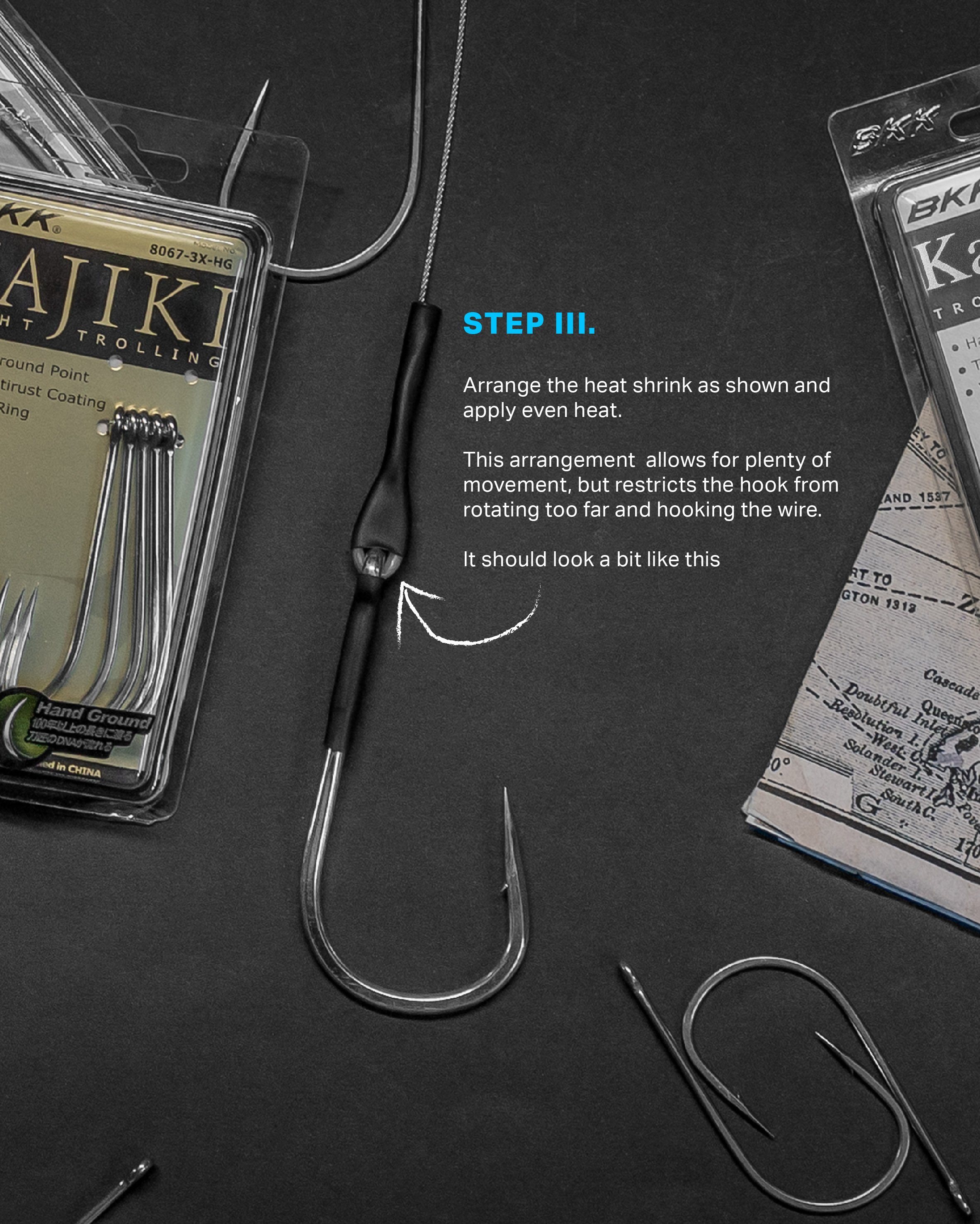Rigging Bluefin Trolling Lures For Success
Every year we get customers asking how to best rig our Kajiki HD trolling hooks.
For the most part, it’s exactly the same as any other trolling hook - but there is one major difference that could catch you out if you’re not experienced with high-carbon steel hooks.
Using carbon steel over stainless steel as a hook material provides a few benefits. One being that carbon steel is stronger and more durable. It’s also possible to get a sharper edge that holds for longer than a stainless steel hook point. By using a stronger steel, the hooks can have a lower profile, meaning penetration is easier and the hooks can be designed with more bite.
The downside, however, is that carbon steel will corrode if not looked after and will react with other metals if in prolonged contact. Combine this with the corrosive nature of saltwater, and you’ve got a slight problem if it’s not addressed. To combat this, we coat our Kajiki HD series of hooks with a bright-tin coating which will repel and resist most of the corrosion. When rigged using mono leader, the complications end there. (You will still need to rinse your gear with fresh water and store it appropriately, but that should be done with any fishing gear)
If you’re rigging these hooks with stainless steel wire, you will need to take a couple of steps while rigging to ensure the two dissimilar metals are not touching. This is simply a matter of slipping some isolation tube between the eye of the hook and the stainless wire, so nothing too complicated. But it is something to be wary of to get the best performance and life out of your gear.
View the image below see how we recommend running these game hooks with stainless-steel wire 👌🏻






Ready to find out for yourself why the Kajiki HD makes such a good game hook?


